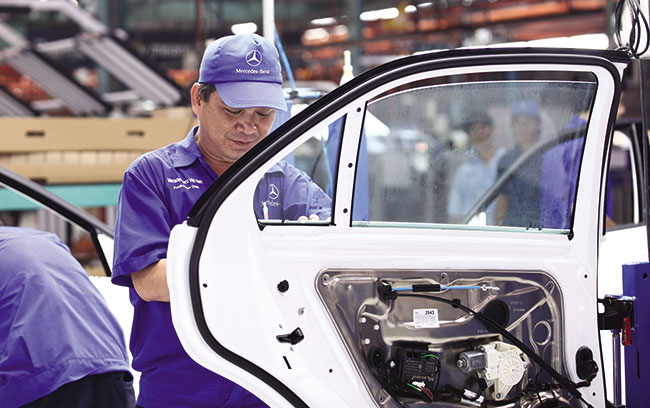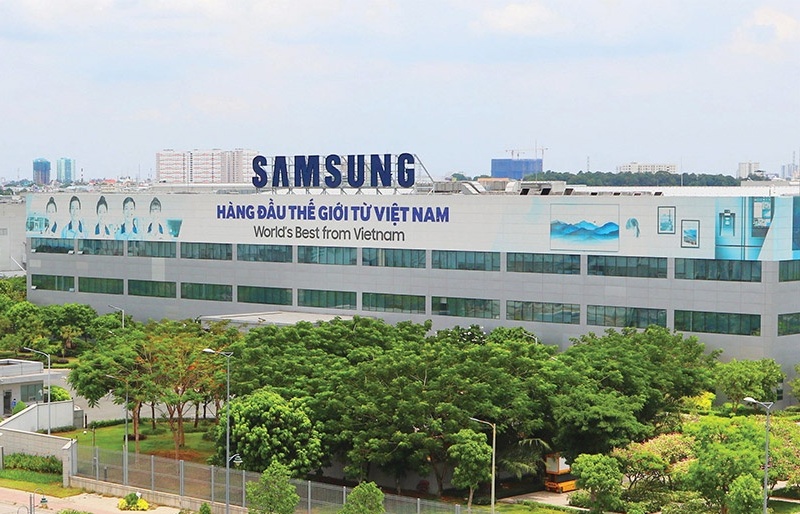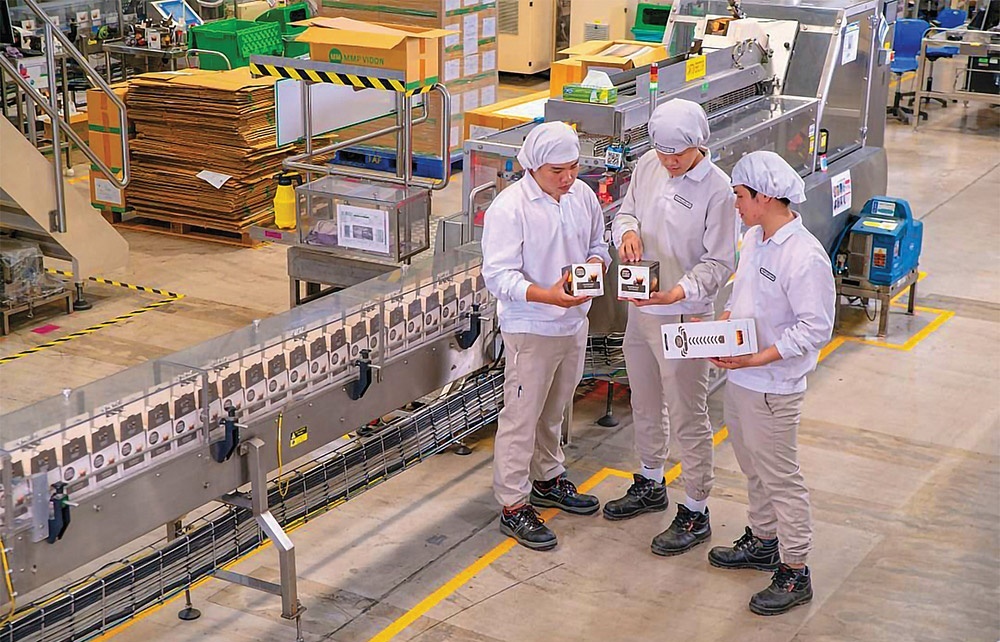Car producers’ request stalled

The MoF stated that the AWG’s proposed incentives would conflict with Vietnam’s WTO commitments
Last week, the Vietnam Business Forum’s Automotive Working Group (AWG), representing big players in the Vietnamese automobile industry such as General Motors, Toyota, Ford and Thaco, proposed that local automobile producers be granted further incentives regarding special consumption tax (SCT), components importing tariffs and fees levied on automobiles.
“Incentives could be equivalent to 10 per cent of SCT taxable price for 10 years from 2018,” suggested working group leader Tony Foster.
However, Deputy Minister of Finance Vu Thi Mai noted that the approval of such a policy would mean discriminating between local production and the import of vehicles.
“The proposal is against Vietnam’s commitment to the World Trade Organization (WTO). Thus, it is unreasonable,” Mai stated.
Under the WTO’s National Treatment principle, once imported goods have entered the market, they are to be treated equally to those produced locally. The requested incentive in SCT would undermine this principle.
Similarly, Mai flatly rejected the producers’ request for further review and reductions in related fees.
“There have been significant reductions in terms of fees so far,” she said, explaining that the sealing for registration fee was now equal to only 15 per cent of the vehicles’ value, as regulated in the government’s Decree No.23/ND-CP dated March 25, 2013, down from 20 per cent previous to the decree. Furthermore, the fee level for re-registration is now only 2 per cent, 10 times lower than the previous level.
She strengthened her argument by referring to sale figures of the industry over the last two years as an example of the success of these changes. “It is the lowered registration fee that has encouraged consumption during 2014 and 2015,” Mai noted.
She also responded to the proposal to cut import duty for all automotive parts and components with a simple shake of the head. However, financial authorities did express a more supportive view of the proposal for duty relief of parts and components that have not yet been produced successfully in Vietnam.
According to Mai, the Ministry of Finance (MoF) may consider allowing those parts to be subject to a lower level of import duty than others, in order to encourage the industry’s development as a whole. Although a reduction of this sort falls short of the producers’ hopes for a complete removal of the tariff, it is by far the most positive response received from the ministry.
According to the AWG, the presented incentives would compensate for high production costs in Vietnam, which is at a disadvantage due to its small production and economic scales. It is estimated that automotive production costs in Vietnam are approximately 20 per cent higher than those of automobiles imported from Thailand.
Given the current trend of industries experiencing significant growth during this year’s first nine months, the AWG estimated that the automotive market size might reach over 210,000 units, including the locally assembled and imported vehicles, by the end of this year. Locally-assembled vehicles are expected to occupy 74 per cent of the industry, equal to 155,400 units. The total available assembly capacity of local manufacturers is about 500,000 units per year, yet the overall capacity utilisation has thus far only reached a mere 30 per cent.
According to the AWG, the lack of sub-optimal capacity utilisation has hindered investors’ confidence in the industry and has also brought into question the future returns for new investments.
What the stars mean:
★ Poor ★ ★ Promising ★★★ Good ★★★★ Very good ★★★★★ Exceptional
Latest News
More News
- VinFast looks to long term with operational roadmap (March 12, 2025 | 15:32)
- Ho Chi Minh City looks to develop potential of Saigon River (March 12, 2025 | 13:34)
- Ho Chi Minh City International Financial Centre to be built in Thu Thiem New Urban Area (March 12, 2025 | 10:59)
- Singapore's YCH Group eyes investment opportunities in Lien Chieu Port (March 11, 2025 | 16:06)
- Trung Nguyen Legend breaks ground on Southeast Asia’s largest coffee factory in Buon Ma Thuot (March 11, 2025 | 14:51)
- Localities roll up sleeves to spur investment progress (March 11, 2025 | 11:17)
- Mekong Capital invests in TNH Hospital Group (March 10, 2025 | 14:36)
- Ho Chi Minh City Metro Line 1 officially inaugurated (March 10, 2025 | 14:15)
- Koreans investing across crucial sectors (March 10, 2025 | 09:06)
- FDI flows to Ho Chi Minh City hit $365 million in first two months (March 07, 2025 | 17:42)















 Mobile Version
Mobile Version